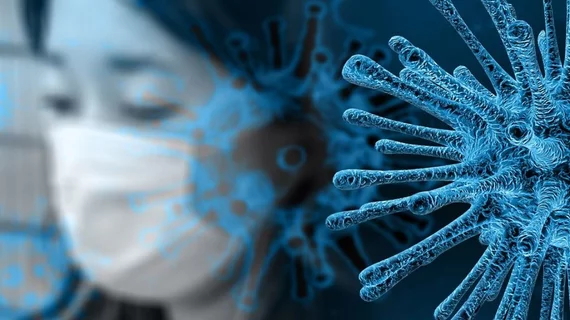Radiologic technologists across the country are being placed on the front lines to deliver care for COVID-19 patients, with some losing their lives in recent weeks. Protecting these caregivers is critical for those who remain open, and a team of experts is offering tips to help.
A team of imaging experts from the epicenter of the outbreak recently detailed their systematic strategy to ensure safety. They’ve broken down their advice into five separate categories, exploring them Monday in European Radiology.
“It is critical for the radiology department to ensure the personal safety of radiologic technologists and avoid cross-infection,” lead author Yanjie Zhao, with the Department of Radiology at Tongji Hospital in Wuhan, and colleagues wrote April 20.
Here’s a quick look at their advice:
1) Personnel arrangements: All radiologic technologists and other workers in the department have regularly conducted personal health reporting. This includes each individual’s fever, cough, chest tightness, diarrhea and any other suspicious symptoms.
If a team member reports any of those symptoms, they must immediately report to the hospital’s Infectious Disease Department where, if needed, they may receive blood tests, a CT scan and lab testing. Sick personnel are also prohibited from returning to the job.
Tongji Hospital selected 18 technologists to form teams responsible for overseeing CT scanners and x-ray machines. They devised a work schedule that has team members working 5-6 hours a day, seven days a week, and resting for 24 hours after.
“The kind of schedule not only avoids long exposure to the virus, but also ensures adequate rest for the radiologic technologists,” the authors noted.
2) Environmental modifications: Zhao and colleagues have set up a CT scanner dedicated to infected patients. And they’ve modified the radiology department to break it up into three areas—contaminated, potentially contaminated and clean. An additional two rooms serve as buffers between contaminated and clean areas, helping to keep technologists safe.
Patients and rad techs use separate pathways to enter the imaging suite. The latter puts on PPE in the clean area, traverses through two buffer rooms and the “potentially contaminated area” before entering the final place where the patient is waiting.
3) Personal protective equipment: Tongji Hospital has established separate PPE requirements for those delivering CT scans versus chest radiography
Operators of computed tomography machines wear the full gamut of surgical masks, respirators, protective glasses, isolation gowns, gloves and shoe covers. As do those delivering mobile chest x-rays, with the addition of face shields, since they’re coming in closer contact with patients.
Zhao et al. noted that their institution has a strict order in which radiologic technologists must put on their PPE, starting with a surgical cap. All told, the sequence takes about 30 minutes, including checking to ensure the tightness of their equipment.
On the reverse end, the hospital has detailed steps for how rad techs exit the exam room, wash their hands and take off garments following the scan.
4) Imaging steps: The study's authors discussed each step to complete CT imaging of a coronavirus patient. This begins with registering and checking the patient’s identifying information. Afterward, the hospital’s rad techs use an intercom system to inform patients to remove any metal ornaments. Able-bodied patients get on and off of the table themselves. Most other duties are performed through the glass, with the hospital using a thin-layer, high-resolution scan protocol to image the chest.
Mobile chest x-rays, meanwhile, are performed in the intensive care unit. Operators wrap the machine with disposable sheets, which are discarded in a special trash bin afterward. The machine is then disinfected with 75% ethanol solution after every exam.
5) Disinfection methods: Tongji Hospital providers disinfect the air, surfaces and floors daily. This includes disinfecting the air with UV lamps 2-3 times daily, wiping down surfaces at least twice a day, and same for disinfecting floors.
Rad techs must dispose of all PPE in a careful manner. “It is strictly prohibited to casually discard masks, gloves, caps and other protective supplies,” the authors noted.
COVID-19 recently claimed the life of a radiologic technologist in Florida earlier this month. With many of its members placing themselves in danger on the front lines of the pandemic, the American Society of Radiologic Technologists recently launched a charitable initiative, offering $100,000 in assistance to the field.

